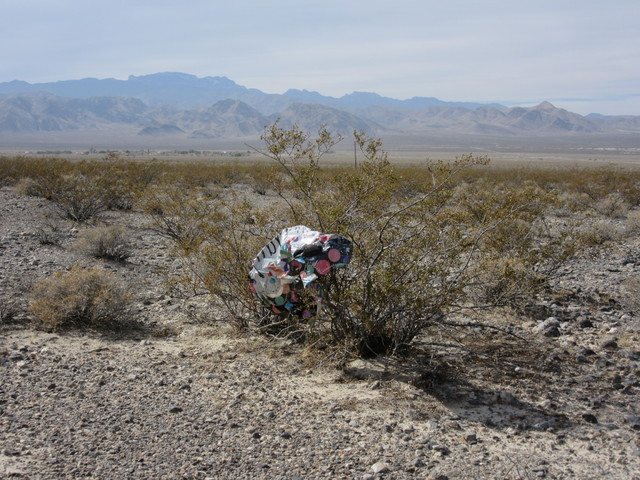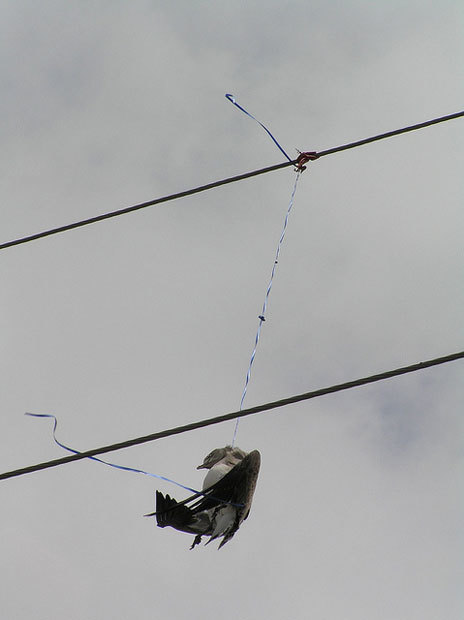Party balloons become ‘airborne litter’ in Nevada desert
Deep in the heart of Desert National Wildlife Refuge, 20 miles from the nearest home as the balloon flies, the shiny remains of someone’s birthday celebration flutters from the spines of a Joshua tree.
Officials from the U.S. Fish and Wildlife Service said they can’t go anywhere on the 1.6 million-acre refuge these days without finding at least one Mylar balloon blown in from nearby Las Vegas.
The long-lasting balloons are a relatively obscure source of visual pollution, and one that’s a lot more widespread than you might think. They also can be dangerous to wildlife.
During a short hike in early October for National Wildlife Refuge Week, a group of refuge staff members and volunteers collected eight Mylar balloons from the landscape.
Refuge manager Amy Sprunger found several more during a climb to the 9,750-foot summit of Sheep Peak.
“It’s ridiculous,” Sprunger said. “I’ve never gone onto the refuge when I haven’t found a balloon.”
Betty Mulcahy, a volunteer interpretive naturalist at the refuge about 30 miles northwest of Las Vegas, recently wrote about the balloon problem in a blog post on the Fish and Wildlife Service’s website.
“Every time I see them hanging at Wal-Mart I think, ‘Someone’s going to buy them and release them, and they’re going to end up on a cactus spine for us to pick up,’” Mulcahy said.
According to BalloonsBlow.org, a Florida-based advocacy group, several states and municipalities have enacted restrictions or outright bans on helium balloon sales and ceremonial releases. Nevada is not among them.
“Basically this is airborne litter,” said John Hiatt, an avid hiker and longtime Las Vegas conservationist. “They’re a nuisance.”
Unlike other forms of trash, the balloons don’t just collect along roads and other places frequented by people. They fly where the wind takes them and come down wherever they run out of gas or snag on a bush or tree or powerline.
“I see Mylar balloons almost every time I’m out,” Hiatt said. “It’s disturbing to be miles and miles from anywhere and see one of them.”
Once on a hike in California’s San Bernardino Mountains, he came across a latex balloon that had been released with a note attached to it by a sixth-grade class in the Pacific beach town of Port Hueneme, “more than 100 miles away as the crow flies,” he said.
Balloon waste is more than just a blight on the landscape.
“Animals, unfortunately, can be drawn to bright shiny objects,” Sprunger said. If they come across balloons, “they may try to consume them.”
Dining on Mylar or latex can be harmful or even deadly to rabbits, birds, lizards and desert tortoise, she said. Small creatures can also become fatally tangled in the strings.
Biologists in California have found dead bighorn sheep with their digestive tracts clogged with latex balloons.
So what can people do to combat the problem?
That’s easy, Sprunger said with a laugh: “Don’t release your ballons. How much more plainly can you say it?”
Contact Henry Brean at hbrean@reviewjournal.com or 702-383-0350. Follow @RefriedBrean on Twitter.































